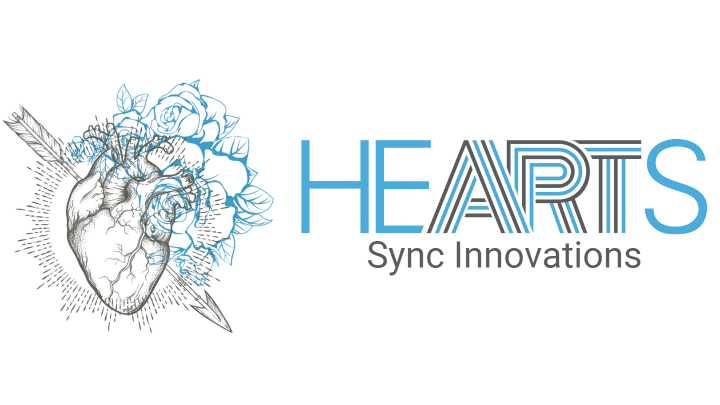Imagine a future where back pain no longer hinders career progress. Offices recognize postural errors in real-time, micro-breaks are precisely managed, and smart training devices strengthen the deep back muscles accordingly. The next generation grows up in a world where back fitness is as natural as tooth brushing – because today we start systematically relieving and intelligently strengthening the back.
The lower back is a high-performance center. Key players are the M. erector spinaeLong spinal extensor along the spine, the M. multifidusDeep stabilizer of the lumbar spine, and the posterior chainMuscle chain consisting of glutes, hamstrings, and spinal extensors. Their interplay controls lumbar lordosisNatural curvature of the lumbar spine, pelvic position, and force transmission. Two levers regulate your back performance: capacity (strength and endurance of the muscles) and load management (posture, movement, recovery). When capacity decreases or loads increase due to unfavorable habits – prolonged sitting, inadequate shoes, stress – a performance deficit arises. Therefore, the goal of a high-performance back is robust tissue, flexible joints, and intelligently managed daily loads.
Increased muscle activity in the lumbar area sounds like training but often means overload in everyday life. High heels increase the activation of the lumbar extensors during walking; middle-aged individuals often lack compensatory pelvic mobility – a pattern that can predispose them to discomfort [1]. Prolonged sitting literally overheats the back muscles: Without active breaks, thermal stress remains elevated, a marker for muscular overstrain; brief movement interruptions significantly reduce this load [2]. Conversely, targeted stretching of the lumbar and posterior thigh muscles immediately improves mobility, supports a more favorable pelvic position when bending, and thereby reduces tensile stress in the lower back [3] [4]. The insight: Not just “more strength” matters – the right mix of strength, flexibility, and breaks reduces everyday loads and boosts performance reserves.
Studies on high-heeled shoes show that increasing heel height raises the electromyography activity of the lumbar extensors during walking; younger women partially compensate for this with more pelvic movement, while middle-aged groups utilize this strategy less frequently – an indication that with increasing tissue stiffness, postural stress becomes more critical [1]. Research on active breaks in office life shows through infrared thermography: After just 30 minutes of sitting, back temperature rises as a sign of muscular load. Incorporating mobility and stretching every 30 minutes normalizes the values over time, while they remain elevated without interruptions – a direct, practical measurement of the relief effect [2]. On the capacity side, intervention studies demonstrate that isolated lumbar extensor exercises improve the cross-sectional area of the multifidus and isometric strength, reducing discomfort – both as a standalone measure and in a multimodal program, with comparable clinical effects [5]. Additionally, the analysis of reverse hyperextensions shows that training effectively targets the posterior chain, with higher loads increasing the activity of spinal extensors and glutes, but not in a linear fashion – a signal that technique and dosage are more important than pure “more weight” [6]. Finally, RCT meta-analyses on yoga indicate reliable short- and long-term improvements in pain and functional limitations, with effects that persist against passive control and also address mental stress – a plus for holistic back resilience [7].
- Twice a week, strengthen the posterior chain: Reverse hyperextensions or isolated lumbar extensor exercises. Start with moderate loads, maintain controlled hip extension and a neutral lumbar spine; progress through repetitions or slight weight increments, not through forced swinging movements [6] [5].
- Train flexibility daily: 8–10 minutes of lumbar and hamstring stretching (e.g., lying knee-to-chest, McKenzie extensions, standing or wall hamstring stretches). Goal: free hip flexion, more anterior pelvic tilt when bending, less tension on the lower back [3] [4].
- Disturb sitting: Take a 1–2 minute active break every 30 minutes. Suggestion: Shoulder circles, standing pelvic tilts, mini lunges, forward bends with soft knees. These micro-movements measurably reduce muscular overload in the back throughout the workday [2].
- Smart shoe change: Prefer flat, stable shoes in daily work life; reserve heels for short occasions. Less forced lumbar extensor activity, better pelvic mobility – especially relevant with increasing age [1].
- Recovery and stress: 2–3 sessions of yoga or Tai Chi per week. Focus on hip opening, spinal mobility, and breathing rhythm. Evidence shows sustained improvements in pain and function – plus mental relief that reduces muscular protective tension [7].
The next wave of back research links sensor technology in daily life with personalized training dosage: thermography, EMG wearables, and adaptive strength training could balance load and capacity in real-time. It will be exciting to see how smart progression algorithms integrate reverse hyperextensions, isolated lumbar extensor work, and mobility so that high performers remain maximally resilient with minimal time investment.
This health article was created with AI support and is intended to help people access current scientific health knowledge. It contributes to the democratization of science – however, it does not replace professional medical advice and may present individual details in a simplified or slightly inaccurate manner due to AI-generated content. HEARTPORT and its affiliates assume no liability for the accuracy, completeness, or applicability of the information provided.













